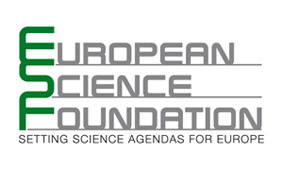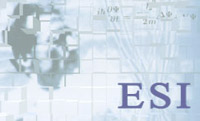Conference program
Mohammed Abouzaid, "Categorical smoothness in symplectic topology"
TBA
Serguei Barannikov, "Equivariant A-infinity matrix integrals and non-commutative BV formalism"
I'll report on a new integration theory in the context of cyclic cohomology,
which is based on BV-type formalism, and which
constructs, starting from A-infinity algebras, equivariantly closed
differential forms on matrix spaces gl(n,A ).
In the case of the simplest associative algebra consisting of the identity element, my construction produces an equivariant extension of the matrix Airy integral.
In the general case, the asymptotic expansion of my matrix integrals are sums over stable ribbon graphs, giving cohomology classes of compactified moduli spaces of curves. My noncommutative BV integration theory is the "higher genus" counterpart of the theory of periods arising in the BV-formalism of polyvector fields on Calabi-Yau manifolds.
In the case of the simplest associative algebra consisting of the identity element, my construction produces an equivariant extension of the matrix Airy integral.
In the general case, the asymptotic expansion of my matrix integrals are sums over stable ribbon graphs, giving cohomology classes of compactified moduli spaces of curves. My noncommutative BV integration theory is the "higher genus" counterpart of the theory of periods arising in the BV-formalism of polyvector fields on Calabi-Yau manifolds.
Damien Calaque, "Deformation quantization via generators and relations"
I will describe how to use the formality in th epresence of two branes to produce a quantization of polynomial Poisson structures via generators and relations.
Alberto Cattaneo, "Classical and perturbative topological field theories with boundary"
Topological quantum field theories may be defined as appropriate
functors from the cobordism category. The classical
and perturbative versions thereof have started to be investigated only recently.
We discuss topological field theories in the AKSZ formalism (this includes Chern-Simons and BF theories as well as the Poisson sigma model). In this case, to boundary components (objects) one can associate a symplectic manifold and a coisotropic submanifold thereof, whereas to cobordisms one associates canonical relations. This very natural construction (a special case with more structure than the general one recently introduced by V. Fock), yields to new viewpoints on, say, the moduli space of flat connections or the symplectic groupoid of a Poisson manifold. This also constitutes the starting point for the perturbative quantization of these theories. The possibility of including boundaries of boundaries (and so on) naturally yields to a Lurie-type description. Eventually, one may hope to be able to reconstruct perturbative topological field theories by gluing simple pieces.
This is based on joint work with P. Mnev and N. Reshetikhin.
We discuss topological field theories in the AKSZ formalism (this includes Chern-Simons and BF theories as well as the Poisson sigma model). In this case, to boundary components (objects) one can associate a symplectic manifold and a coisotropic submanifold thereof, whereas to cobordisms one associates canonical relations. This very natural construction (a special case with more structure than the general one recently introduced by V. Fock), yields to new viewpoints on, say, the moduli space of flat connections or the symplectic groupoid of a Poisson manifold. This also constitutes the starting point for the perturbative quantization of these theories. The possibility of including boundaries of boundaries (and so on) naturally yields to a Lurie-type description. Eventually, one may hope to be able to reconstruct perturbative topological field theories by gluing simple pieces.
This is based on joint work with P. Mnev and N. Reshetikhin.
Gil Cavalcanti, "Normal forms and surgeries for generalized complex 4-manifolds"
I will explain how one can get normal forms for interesting submanifolds
of a generalized complex 4-manifold. These include neighborhood theorems for points in the
type change locus, a whole compact component of the type change locus as well as Lagrangian
submanifolds intersecting the type change locus. I will then use these results to produce
examples of generalized complex 4-manifolds and to show that the problem of classifying
them is related to the problem of classifying symplectic manifolds with (singular)
symplectic tori.
Cheol-Hyun Cho, "Homotopy cyclic A-infinity algebras"
We explain the homotpy notions of cyclic A-infinity
algebras and and related developments.
We explain a theorem of Kontsevich and Soibelman on its relationship
with cyclic cohomology, and provide
explicit correspondences in terms of strong homotopy inner products
and negative cyclic cohomology.
Marius Crainic, "Adjoint representations"
TBA
Christopher Douglas, "Fusion categories are dualizable"
TBA
Giovanni Felder, "Elliptic Dunkl operators for complex reflection groups and integrable systems"
TBA
Rui Loja Fernandes, "Equivariant Picard groups of Poisson manifolds"
TBA
John Francis, "The E_n tangent complex, Hochschild cohomology, and higher deformations"
TBA
Kenji Fukaya, "Hochschild and cyclic cohomology in Lagrangian Floer theory and Mirror symmetry"
TBA
Wendy Lowen, "Deformations of linear sites and projective schemes"
Inspired upon categories of sheaves and quasi-coherent sheaves in algebraic
geometry, Grothendieck categories are often used as models for
non-commutative spaces. Although these categories have a good intrinsic
deformation theory, deformations do not necessarily preserve a concrete
representation of the category as a linear site. In this talk, we will
discuss homological conditions ensuring that the deformation theory is
actually controlled by an underlying (non-linear) site. We will present two
different applications to schemes, one to "local" representations using
affine covers, and one to "global" representations of projective schemes
using $\Z$-algebras.
Dmitry Roytenberg, "Courant algebroids and classical (1+1)-dimensional field theory"
The algebra of observables in classical (1+1)-dimensional field
theory is a vertex Poisson algebra (VPA), naturally graded by conformal weight.
Truncation at every value of the weight has a left adjoint, allowing for a successive
approximation of the original VPA by structures with a finite number of operations.
The first interesting truncation is at conformal weight 1, and is precisely a
Courant-Dorfman algebra (CDA). VPA's freely generated by CDA's are special in
that they come from vertex Lie algebroids via a "universal enveloping" construction,
and admit a natural quasi-conformal structure. Examples include Heisenberg and
Kac-Moody current algebras, as well as a Poisson sigma model current algebra
studied by Alekseev and Strobl. This is an ongoing joint work with Paul Bressler.
Pavol Severa, "Quasi-Poisson geometry and symplectic 2-groupoids"
TBA
Boris Tsygan, "Open questions in deformation quantization"
TBA
Maxim Zabzine, "3D TFTs, characteristic classes and knots invariants"
I will review the general construction of three dimensional TFT within BV
framework. I will
explain how the corresponding Feynman rules lead to the interesting characteristic
classes and
the knots invariant within this framework.
Xinwen Zhu, "Double loop groups and reciprocity laws on algebraic surfaces"
TBA

